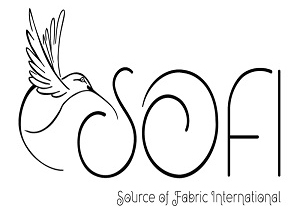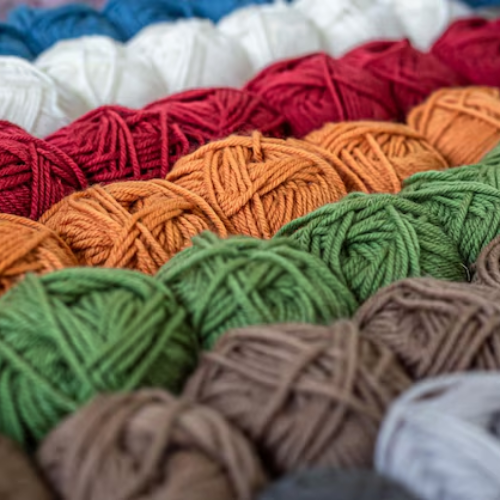Wool fabric stands out as a timeless choice for both fashion and interior design. Its natural warmth, durability, and versatility make it a favorite among designers and crafters alike. As the demand for high-quality materials continues to rise, wholesale fabric wool offers an excellent opportunity for businesses and artisans to access premium textiles at competitive prices.
Purchasing fabric in bulk not only ensures a steady supply but also opens the door to a variety of textures, colors, and weights. Whether it’s for creating cozy garments or luxurious home furnishings, wholesale fabric wool provides the foundation for countless creative projects. Understanding the benefits and options available can empower buyers to make informed decisions that elevate their work and satisfy their customers.
Overview of Wholesale Fabric Wool
Wholesale fabric wool provides a practical solution for businesses and artisans seeking quality materials. Wool is known for its warmth, durability, and versatility, making it an ideal choice for various projects. Purchasing wool in bulk enables access to a wide range of options, including different textures, colors, and weights.
Buying wholesale fabric lowers costs while maintaining a focus on quality. This advantage allows businesses to offer competitive pricing to customers without sacrificing product integrity. Many suppliers provide choices that cater to diverse needs, from soft wool blends for clothing to sturdy woolen fabrics for home décor.
Artisans and designers benefit from sourcing materials in larger quantities. Bulk purchases streamline the selection process, ensuring that consistent quality is maintained across multiple projects. Additionally, wholesale options often lead to discovering exciting new styles and finishes that can enhance product offerings.
Understanding the market for wholesale fabric wool helps buyers make informed choices and build successful businesses. Careful research on suppliers and their product lines allows for better decision-making and effective inventory management.
Benefits of Wholesale Fabric Wool
Wholesale fabric wool offers many advantages for businesses and artisans. Sourcing wool in bulk means access to quality materials at competitive prices. This section outlines key benefits of buying wholesale wool fabric.
Cost-Effectiveness
Buying wholesale fabric wool helps save money. Retail prices can be high, but purchasing in bulk lowers costs significantly. Businesses can minimize expenses while maintaining high-quality products. This cost-effectiveness allows for better pricing strategies, enabling retailers to attract more customers.
Quality and Durability
Wholesale fabric wool ensures consistent quality across all products. Wool is known for its strength and longevity, making it a preferred choice for garments and home décor. When businesses buy in bulk, they receive fabrics that meet high standards. This reliability helps maintain brand reputation and customer satisfaction.
Types of Wholesale Fabric Wool
Wholesale fabric wool comes in different types, each offering unique qualities for various applications. Understanding these types helps buyers choose the right material for their projects.
Merino Wool
Merino wool is known for its softness and lightweight nature. This type of wool comes from Merino sheep, which produce fine, soft fibers. The fibers regulate temperature and wick moisture, making Merino wool ideal for clothing and outdoor gear. It’s popular for active wear due to its breathability and odor resistance. Merino wool fabrics are available in various weights, from light to heavy, suitable for different seasons.
Cashmere Wool
Cashmere wool provides a luxurious feel, sourced from cashmere goats. This wool type is finer than regular wool, making it incredibly soft against the skin. Cashmere is highly valued for its warmth without bulk, perfect for high-end garments like sweaters and scarves. Although it tends to be more expensive than other types, its unique properties justify the cost for those seeking quality. Cashmere wool is often blended with other fibers to enhance durability while maintaining softness.
Sourcing Wholesale Fabric Wool
Sourcing wholesale fabric wool involves identifying trustworthy suppliers and assessing fabric quality. Businesses benefit from knowing where to find reliable sources while ensuring the materials meet their standards.
Finding Reliable Suppliers
Finding reliable wholesale suppliers starts with research. Online directories display various fabric wholesalers specializing in wool. Attending trade shows offers direct contact with suppliers and the chance to examine samples. Recommendations from industry peers can also lead to dependable sources. Reputable suppliers provide consistent quality and transparent pricing, which enables better purchasing decisions.
Evaluating Fabric Quality
Evaluating fabric quality is crucial in sourcing wool. Fabrics should feel soft and smooth to the touch. Business owners should check for even stitching and consistent weight throughout the material. Examining the fabric for pilling or signs of wear also indicates quality. Obtaining samples before making bulk orders allows businesses to assess color accuracy and texture thoroughly. Understanding different types of wool, such as Merino and Cashmere, helps buyers select fabrics that meet specific project needs. High-quality wool enhances the final product and strengthens brand reliability.
Trends in Wholesale Fabric Wool
Trends in wholesale fabric wool show a shift toward sustainability and eco-friendly practices. Many buyers seek materials sourced from responsible farms that prioritize animal welfare and environmental protection. This trend promotes the use of organic and certified wool, appealing to conscious consumers and brands.
Innovation in fabric technology also plays a significant role in the current trends. Producers create blends that enhance the properties of wool while maintaining its natural benefits. For example, adding synthetic fibers can increase durability and ease of care, making wool more attractive to various markets.
The demand for unique textures and colors continues to rise. Suppliers respond by offering diverse options in finishes, patterns, and hues. Whether looking for cotton knit fabric pink red wholesale or other specialty fabrics, buyers have access to an extensive selection. This allows designers to experiment with aesthetics and create standout pieces for both fashion and home décor.
Customizable wholesale options are now common. Suppliers provide the choice to modify weight and texture based on client needs. Businesses searching for bolts of fabric wholesale or specialized materials can find tailored solutions that align with market trends. This flexibility empowers businesses to create products that fit specific demands.
Online purchasing has gained popularity. Digital platforms make it easier for designers and brands to access a wider range of suppliers and prices. With options like wholesale fabric online, buyers can compare selections, place bulk orders, and receive direct shipments from manufacturers, ensuring better deals and faster turnaround.
Finally, the trend toward multifunctional fabrics is gaining traction. Wool’s inherent qualities, like moisture-wicking and temperature regulation, make it suitable for various uses. Customers searching for wholesale direct legit fabric sources prioritize quality and reliability, ensuring that their materials perform well across different environments. This makes wholesale fabric wool a smart choice for diverse applications.
Conclusion
Wholesale fabric wool stands out as an essential resource for businesses and artisans alike. Its unique qualities and versatility cater to a wide range of creative projects, ensuring that designers can meet diverse customer demands. By sourcing wool in bulk, they not only enjoy significant cost savings but also maintain a consistent quality that enhances their brand reputation. For those seeking a&a wholesale fabric, finding fabric at wholesale prices allows for greater affordability and variety, making it easier to source wholesale cotton fabric alongside wool options.
As the industry evolves, embracing sustainability and innovation in fabric technology has become crucial. With the growing emphasis on eco-friendly practices, suppliers are adapting to meet these needs. The future of wholesale fabric wool looks promising, providing endless possibilities for those looking to create exceptional products that resonate with today’s market trends.
Frequently Asked Questions
What are the benefits of using wool fabric in fashion and interior design?
Wool fabric offers natural warmth, durability, and versatility, making it ideal for a range of applications. It’s also increasingly popular as consumers seek high-quality materials that deliver both comfort and style in garments and home décor.
Why should businesses consider purchasing wholesale fabric wool?
Buying wholesale fabric wool allows businesses and artisans to access premium textiles at lower prices. This bulk purchasing helps maintain competitive pricing while ensuring high-quality standards across all products, enhancing brand reputation.
What types of wool are available for wholesale purchases?
Common types of wholesale fabric wool include Merino, known for its softness and moisture-wicking properties, and Cashmere, prized for its luxurious feel. Each type serves specific needs, making it suitable for various applications in fashion and interiors.
How can I find reliable suppliers for wholesale fabric wool?
To find trustworthy suppliers, explore online directories, attend trade shows, and seek recommendations within the industry. Assessing supplier reputations and reading reviews can also guide you in making informed choices about your fabric sources.
What factors should I consider when evaluating fabric quality?
When evaluating fabric quality, check for softness, even stitching, and signs of wear. Obtaining samples before committing to bulk orders is essential to ensure the colors and textures meet your project requirements.
What trends are influencing the wholesale fabric wool market?
Current trends include a move toward sustainability and eco-friendly practices, innovative fabric technology, and a growing demand for unique textures and customizable options. Online purchasing is also becoming more popular, broadening access to suppliers and products.


